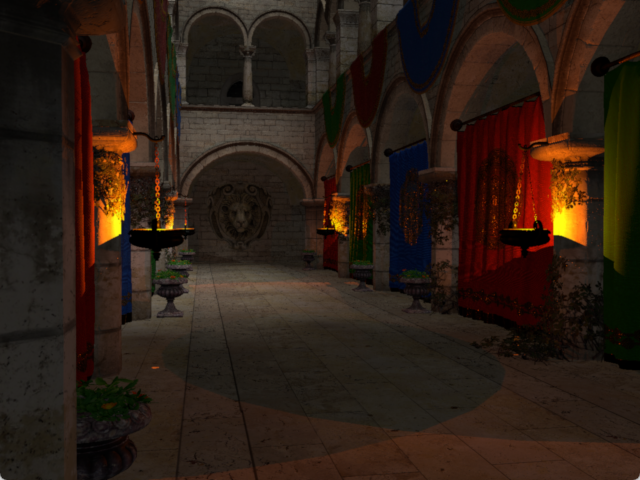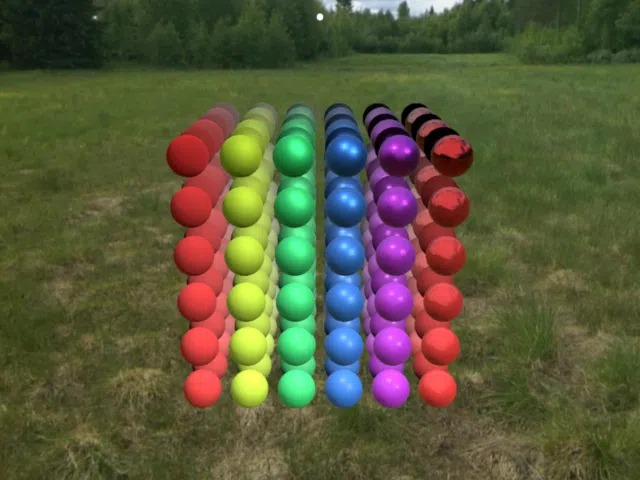A python render engine targeting Vulkan/Metal/DX12.
[User Guide] [Example Gallery] [API Reference]
pip install -U pygfx glfwTo work correctly, pygfx needs some window to render to. Glfw is one lightweight option, but there are others, too. If you use a different wgpu-compatible window manager or only render offscreen you may choose to omit glfw. Examples of alternatives include: jupyter_rfb (rendering in jupyter), PyQt, PySide, or wx.
In addition there are some platform
requirements, see the wgpu docs. In
essence, you need modern (enough) graphics drivers, and pip>=20.3.
Note A walkthrough of this example can be found in the guide.
import pygfx as gfx
cube = gfx.Mesh(
gfx.box_geometry(200, 200, 200),
gfx.MeshPhongMaterial(color="#336699"),
)
def animate():
rot = gfx.linalg.Quaternion().set_from_euler(
gfx.linalg.Euler(0, 0.01)
)
cube.rotation.multiply(rot)
if __name__ == "__main__":
gfx.show(cube, before_render=animate)Some of pygfx's key features are:
- SDF based text rendering (example)
- order-independent transparency (OIT) (example)
- lights, shadows, and physically based rendering (PBR) (example)
- event system with built-in picking (example)
- texture and color mapping supporting 1D, 2D and 3D data (example)
And many more! Check out our feature demos in the docs.
pygfx is a ThreeJS inspired graphics library that uses WGPU (the successor of OpenGL) to provide GPU acceleration to rendering workloads. It is mature enough to serve as a general-purpose rendering engine (Yes, you can write a game with it.) while being geared towards scientific and medical visualization. Thanks to its low level of abstraction it is flexible and can be adapted to various use-cases. In other words, pygfx emphasizes on hackability and correctness while maintaining the level of performance you would expect from a GPU accelerated library.
Pygfx is licensed under the BSD 2-Clause "Simplified" License. This means:
- ✅ It is free (and open source) forever. 💘
- ✅ You can use it commercially.
- ✅ You can distribute it and freely make changes.
- ❌ You can not hold us accountable for the results of using pygfx.
We use a pull request (PR) based workflow similar to many other open-source libraries in the python ecosystem. You can read more about this workflow here; if you have previously contributed to open-source, a lot of this will look familiar already.
To get a working dev install of pygfx you can use the following steps:
# Click the Fork button on GitHub and navigate to your fork
git clone <address_of_your_fork>
cd pygfx
# if you use a venv, create and activate it
pip install -e .[dev,docs,examples]
pytestThe test suite is divided into two parts; unit tests for the core, and unit tests for the examples.
pytest -v testsruns the core unit tests.pytest -v examplestests the examples.



